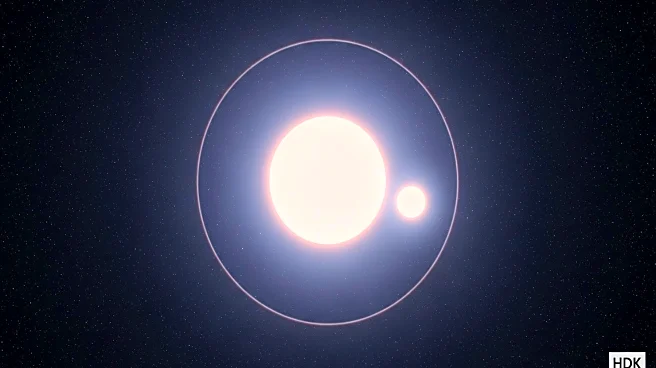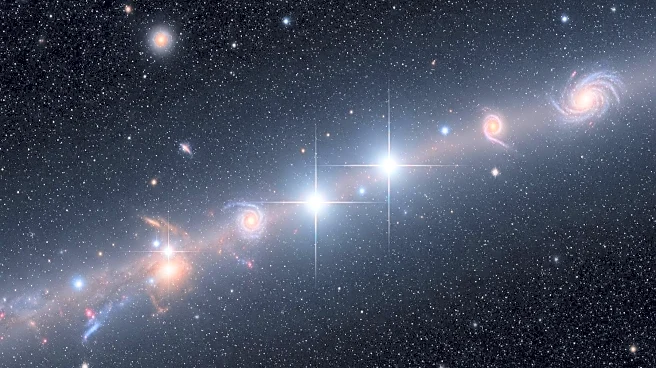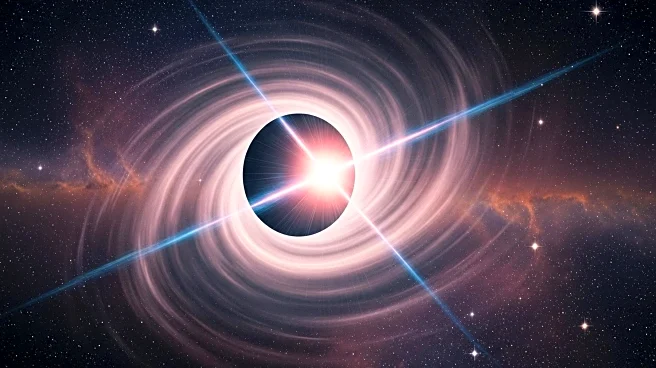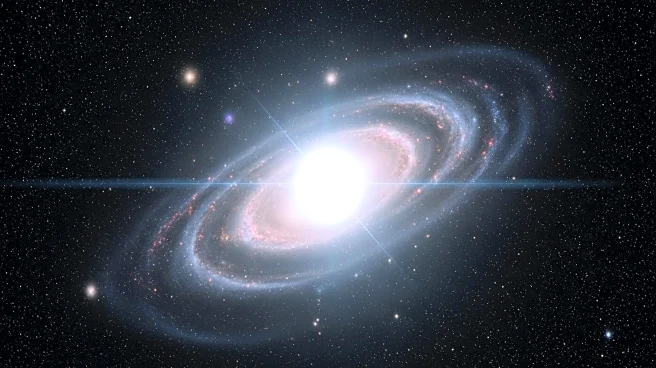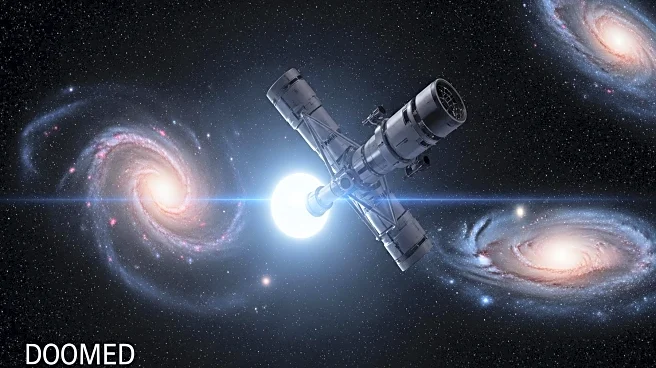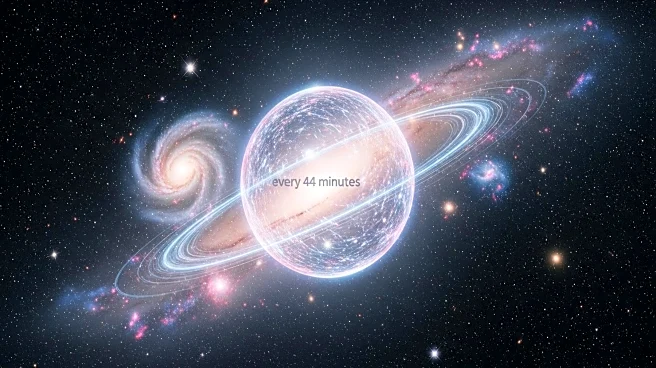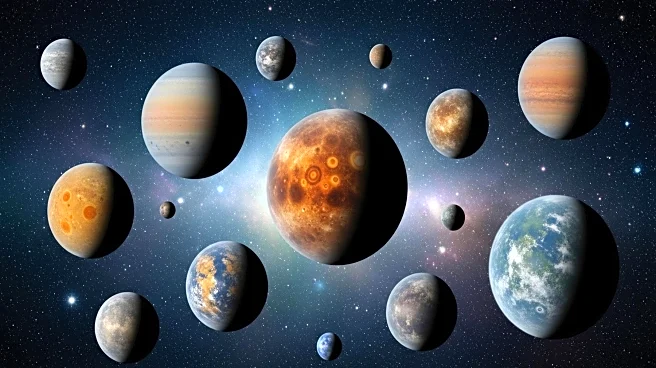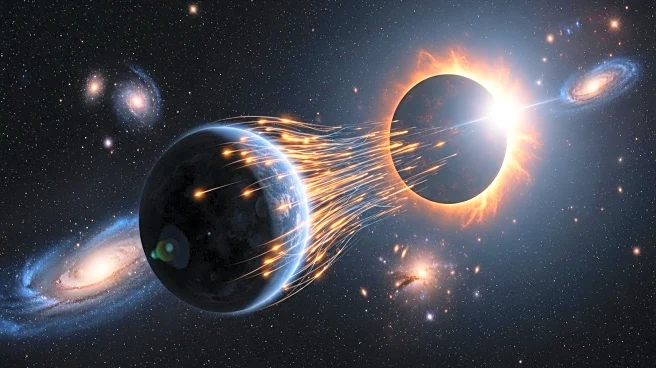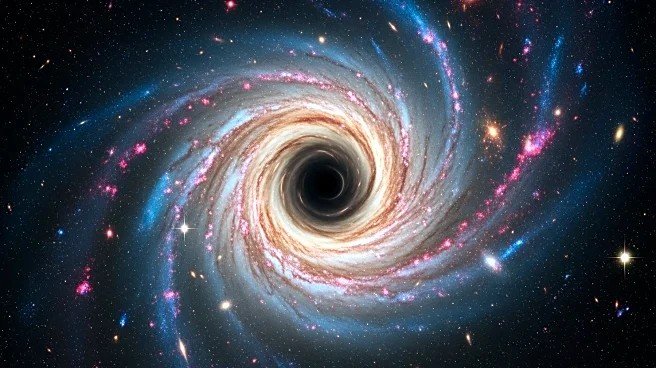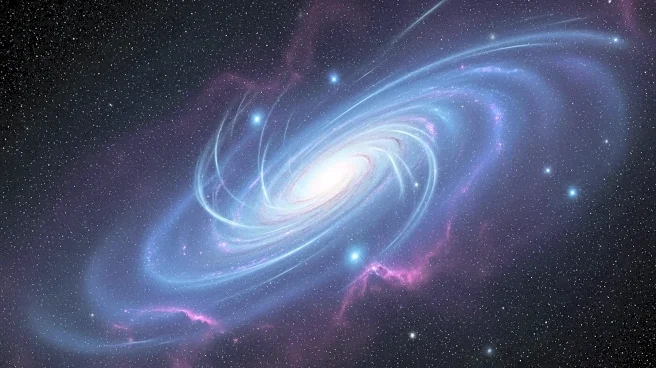What's Happening?
Researchers from Carnegie Mellon University have confirmed the existence of a companion star to Betelgeuse, a massive supergiant star in the Orion constellation. Using NASA's Chandra X-ray Observatory and the Hubble Space Telescope, the team led by Anna O'Grady discovered a young stellar object about one solar mass orbiting Betelgeuse, which is 16-17 times the mass of the sun. This discovery challenges existing binary star formation models, as binary pairs typically form with similar masses. The companion star, nicknamed 'Betelbuddy,' was observed during a critical alignment period, allowing researchers to secure Director's Discretionary Time on the telescopes for this significant research opportunity.
Why It's Important?
The discovery of Betelgeuse's companion star provides new insights into the formation and evolution of binary star systems, particularly those with extreme mass ratios. This finding could lead to a reevaluation of current models and theories regarding binary star formation. Additionally, understanding the dynamics of such systems may help explain Betelgeuse's six-year cycle of brightening and dimming, which has puzzled astronomers for years. The research highlights the importance of advanced observational techniques and the strategic use of powerful telescopes in uncovering hidden aspects of the universe.
What's Next?
The confirmation of Betelgeuse's companion star opens up new avenues for research into extreme mass ratio binaries. Future studies may focus on the long-term dynamics of the Betelgeuse system and its impact on the star's behavior. Researchers may also explore the implications of this discovery for other supergiant stars suspected of having companion stars. Continued observations and data analysis will be crucial in refining models of binary star formation and understanding the broader implications for stellar evolution.
Beyond the Headlines
The discovery challenges the traditional understanding of binary star formation, which typically involves stars of similar masses. The existence of Betelgeuse's companion star suggests that extreme mass ratio binaries may be more common than previously thought, potentially leading to a paradigm shift in astrophysics. This could have implications for the study of other massive stars and their potential companions, as well as for the understanding of stellar life cycles and the distribution of mass in the universe.
